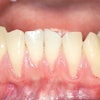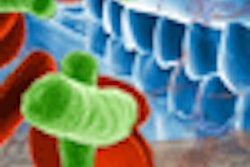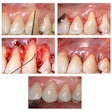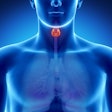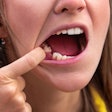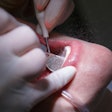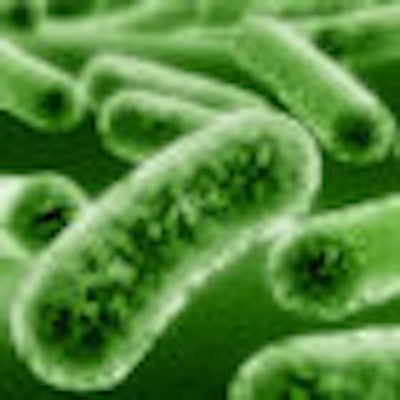
A new mobile diagnostic platform developed by a team of German researchers can be used in a dental office to analyze DNA collected from teeth and identify the 11 most relevant periodontitis pathogens in less than 30 minutes.
Scientists at the Fraunhofer Institute for Cell Therapy and Immunology (IZI) collaborated with BECIT and ERT-Optik to develop ParoChip, a lab-on-a-chip module designed to allow dentists and medical labs to prepare samples quickly and then analyze the bacteria. All steps in the process -- the duplication of DNA sequences and their detection -- take place directly on the platform, which consists of a disk-shaped microfluidic card that measures about 6 cm in diameter.
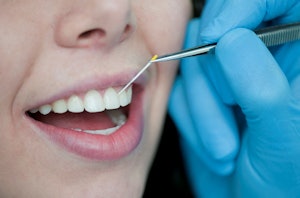 With ParoChip, sterile, toothpick-shaped paper points are used to remove bacteria from the teeth for analysis using a method based on the polymerase chain reaction. Image courtesy of Fraunhofer Institute for Cell Therapy and Immunology.
With ParoChip, sterile, toothpick-shaped paper points are used to remove bacteria from the teeth for analysis using a method based on the polymerase chain reaction. Image courtesy of Fraunhofer Institute for Cell Therapy and Immunology.
Of the estimated 700 species of bacteria found in the mouth, only 11 are known to cause periodontal disease; of these, some are deemed to be severely pathogenic, according to the IZI researchers. If these biomarkers are present in the gingival sulcus, the patient is at high risk of a severe form of periodontitis, and the only way to find out is by conducting a bacteria test.
The problem is that current methods for identifying pathogens are time-consuming and must be carried out in an external contract laboratory, the researchers noted. Conventional bacterial analysis using microbial culture carries the risk of bacteria being killed as soon as they come into contact with oxygen.
Most methods of microbiological testing for periodontitis focus on the presence of Aggregatibacter actinomycetemcomitans, Porphyromonas gingivalis, Tannerella forsythus, and Treponema denticola. However, many of these techniques suffer from low sensitivity or specificity and are sometimes slow, laborious, and expensive (Open Dentistry Journal, July 2011, Vol. 5, pp. 110-115). In recent years, molecular biology methods such as whole genomic probes or oligogenomic-based probes and quantitative or qualitative polymerase chain reaction (PCR)-based methods -- including the ParoChip -- have been introduced.
"Until now, analysis took around four to six hours," explained Dirk Kuhlmeier, PhD, a scientist at the IZI, in a press release. "With ParoChip it takes less than 30 minutes. This means it's possible to analyze a large number of samples in a short amount of time."
With the ParoChip, the analysis is conducted in a contactless and fully automated manner. Samples are taken using sterile, toothpick-shaped paper points, after which the bacteria are removed from the point and their isolated DNA injected into reaction chambers containing dried reagents. There are 11 such chambers on each card, each featuring the reagent for one of the 11 periodontal pathogens. The total number of bacteria is determined in an additional chamber, via PCR. This method allows millions of copies of even tiny numbers of pathogen DNA sequences to be made.
To generate the extremely quick temperature changes that are required for PCR, the ParoChip's disk-shaped plastic chip is attached to a metal heating block with three temperature zones and is mechanically turned so it passes over these zones. This causes a fluorescent signal to be generated that is measured by a connected optical measuring device featuring a fluorescence probe, a photodetector, and a laser diode. The key benefit is that the signal makes it possible to quantify each type of bacterium and thus determine the severity of the inflammation, as well as establish the total number of all the bacteria combined, according to the development team. This can enables doctors to customize antibiotic treatment accordingly, they added.
"As the connected optical measuring system allows us to quantify bacteria, ParoChip is also suited to the identification of other bacterial causes of infection, such as food-borne pathogens or those that lead to sepsis," Kuhlmeier said. "Using ParoChip does away with many of the manual steps that are a necessary part of current bacteria tests. The synthetic disks can be produced cheaply and disposed of after use in the same way as disposable gloves."
Already available as a prototype, ParoChip is initially intended for use in clinical laboratories but could also be used by dentists to analyze patient samples in their practices, the researchers noted.
